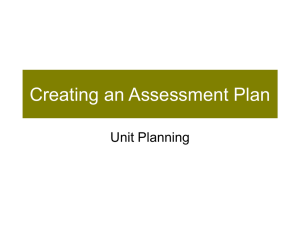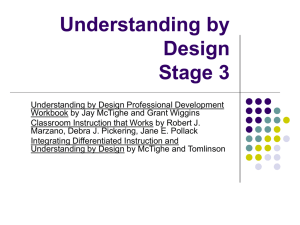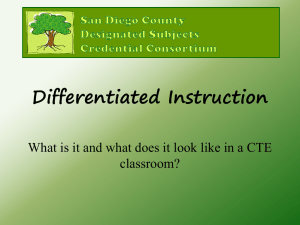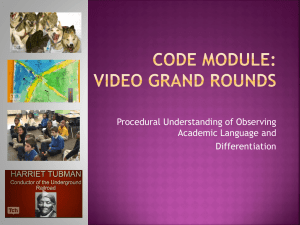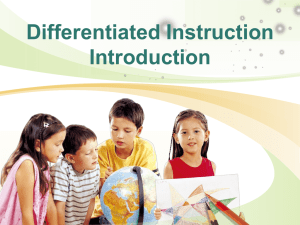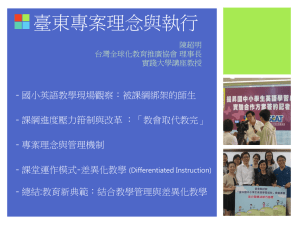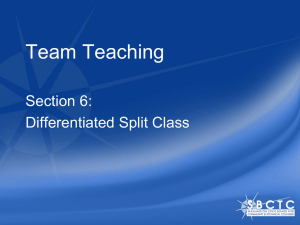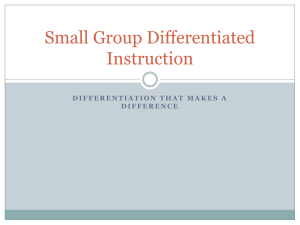PowerPoint - Ciclt.net
advertisement
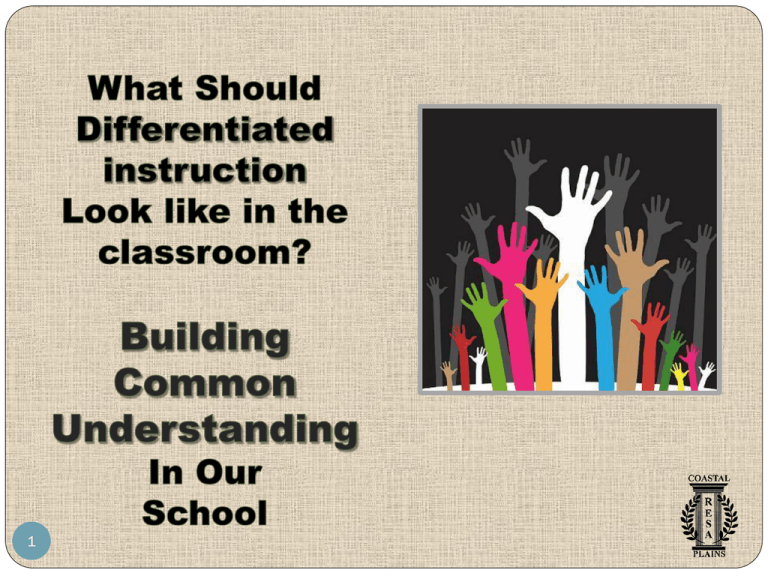
1 Level III Level III is the expected level of performance. The teacher consistently challenges and supports each student’s learning by providing appropriate content and developing skills which address individual learning differences. Teacher Performance Standard 4 Performance Standard 4: Differentiated Instruction The teacher challenges and supports each student’s learning by providing appropriate content and developing skills which address individual learning differences. Level IV In addition to meeting the requirements for Level III Level III Level III is the expected level of performance. The teacher continually facilitates each student’s opportunities to learn by engaging him/her in critical and creative thinking and challenging activities tailored to address individual learning needs and interests. (Teachers rated as Exemplary continually seek ways to serve 2 as role models or teacher leaders.) The teacher consistently challenges and supports each student’s learning by providing appropriate content and developing skills which address individual learning differences. Level II The teacher inconsistently challenges students by providing appropriate content or by developing skills which address individual learning differences. Level I The teacher does not challenge students by providing appropriate content or by developing skills which address individual learning differences. 1. Think about everything you know about the topic. 2.Write for 1 minute. 3.Pass to the right. 4.Read what the new page says. 5.Put a check on Differentiated one idea you think is Instruction important. 6.Add a term to the list. 7.Repeat. 8.At your table, discuss the 3 top ideas. 3 Targets • I can define Differentiated Instruction using language from GaDOE Teacher Performance Standards. • I can identify classroom practices that differentiate instruction for learning. • I can develop a plan for sharing a common understanding of DI at my school. • (Set a personal learning goal. What do you hope to take away from the session?) 5 What Is DI? What Is It Not? Definition Examples 7 Characteristics Differentiated Instruction Non-examples GaDOE Resources Provide a Framework for Common Understanding 8 www.cpresa.org www.cpresa.org TKES Support TASK: Work with a partner. Define Differentiated Instruction on Frayer: 1. 2. 3. 4. 5. 6. 7. Read the Quick Guide (Characteristics, Examples) Read the Fact Sheet (Characteristics, Examples) Read the Infographic (Non-examples) Read pp. 5-7 Course Participant’s Guide (Examples) Come to consensus on a definition Include characteristics Write at least 3 examples of DI – include an example from your content/grade 8. Write at least 3 non-examples of DI DI and Related Teacher Performance Standards Performance Standard 2: Instructional Planning The teacher plans using state and local school district curricula and standards, effective strategies, resources, and data to address the differentiated needs of all students. Performance Standard 3: Instructional Strategies The teacher promotes student learning by using research-based instructional strategies relevant to the content to engage students in active learning and to facilitate the students’ acquisition of key knowledge and skills. Performance Standard 6: Assessment Uses The teacher systematically gathers, analyzes, and uses relevant data to measure student progress, to inform instructional content and delivery methods, and to provide timely and constructive feedback to both students and parents. Performance Standard 8: Academically Challenging Environment The teacher creates a student-centered, academic environment in which teaching and learning occur at high levels and students are self-directed learners. 10 12 TASK: Identify DI Teacher Planning & Practices Responsive Teaching 1. Discuss the video clips. 2. Identify characteristics and examples of differentiated instruction in both elementary & high. Support your thinking. 3. What questions might an evaluator ask the teacher(s)? Assessment Use with DI is Formative Traditional Classroom Assessment is most common at the end of learning to see “who got it” 14 Differentiated Classroom Assessment is ongoing and diagnostic to understand how to make instruction more responsive to learner need Exit slips * Admit slips * TOTD Examples Elementary: https://www.teachingchannel.org/videos/teacherassessment-strategy MS/HS: https://www.teachingchannel.org/videos/studentdaily-assessment Ticket in the Door or My Favorite No: https://www.teachingchannel.org/videos/class-warmup-routine 15 The bottom line . . . “Good lessons start with a clear, curriculumbased objective and assessment, followed by multiple cycles of instruction, guided practice, checks for understanding (the soul of a good lesson), and ongoing adjustments to instruction.” Mike Schmoker 18 19 Differentiated Instruction Defined Examples 20 Non-Examples Understanding Evaluation of Std. 4 Observations: When Will DI be Evaluated? 21 How Are Student Perception Data Used? How Can We Support Teachers? First Steps for Differentiating at the High School Level (Kristina Doubet, ASCD) http://www.differentiationcentral.com/videos2.html#se cond Helping Primary Students Become Responsible, Selfreliant Learners (Monica Harrold, ASCD) http://www.differentiationcentral.com/videos2.html#el ementary Teaching Channel: https://www.teachingchannel.org/ Coastal Plains RESA TKES Support: www.cpresa.org 22 Where Am I Going? Where Am I Now? How Can I Close the Gap? • I can define Differentiated Instruction using language from GaDOE Teacher Performance Standards. • I can identify classroom practices that differentiate instruction for learning. • I can develop a plan for sharing a common understanding of DI at my school. • I met/did not meet my personal learning target. To follow up, I need to . . . 23 Handout: Agenda Summarize at Your Table 1. 2. 3. 4. 5. 24 Revisit your circle map and Frayer Model. Cross out any misconceptions. What big ideas do you want teachers at your school to know? Write a step you will take to strengthen your current practice or a current practice at your school. Set a date/time to work on Goal 3 of the Agenda: Develop a plan for sharing a common understanding at your school. Revisit your personal learning goal. Was it met? Resources at www.cpresa.org Research Base Tomlinson and Moon, Assessment and Student Success in a 26 Differentiated Classroom, ASCD, 2013. Tomlinson, The Differentiated Classroom: Responding to the Needs of all Learners, ASCD, 1999. GaDOE, Quick Guide Standard 4 GaDOE, Fact Sheet Standard 4 GaDOE, Differentiated Instruction: A Teacher’s and School Leader’s Guide for Improvement (Participant’s Guide)

